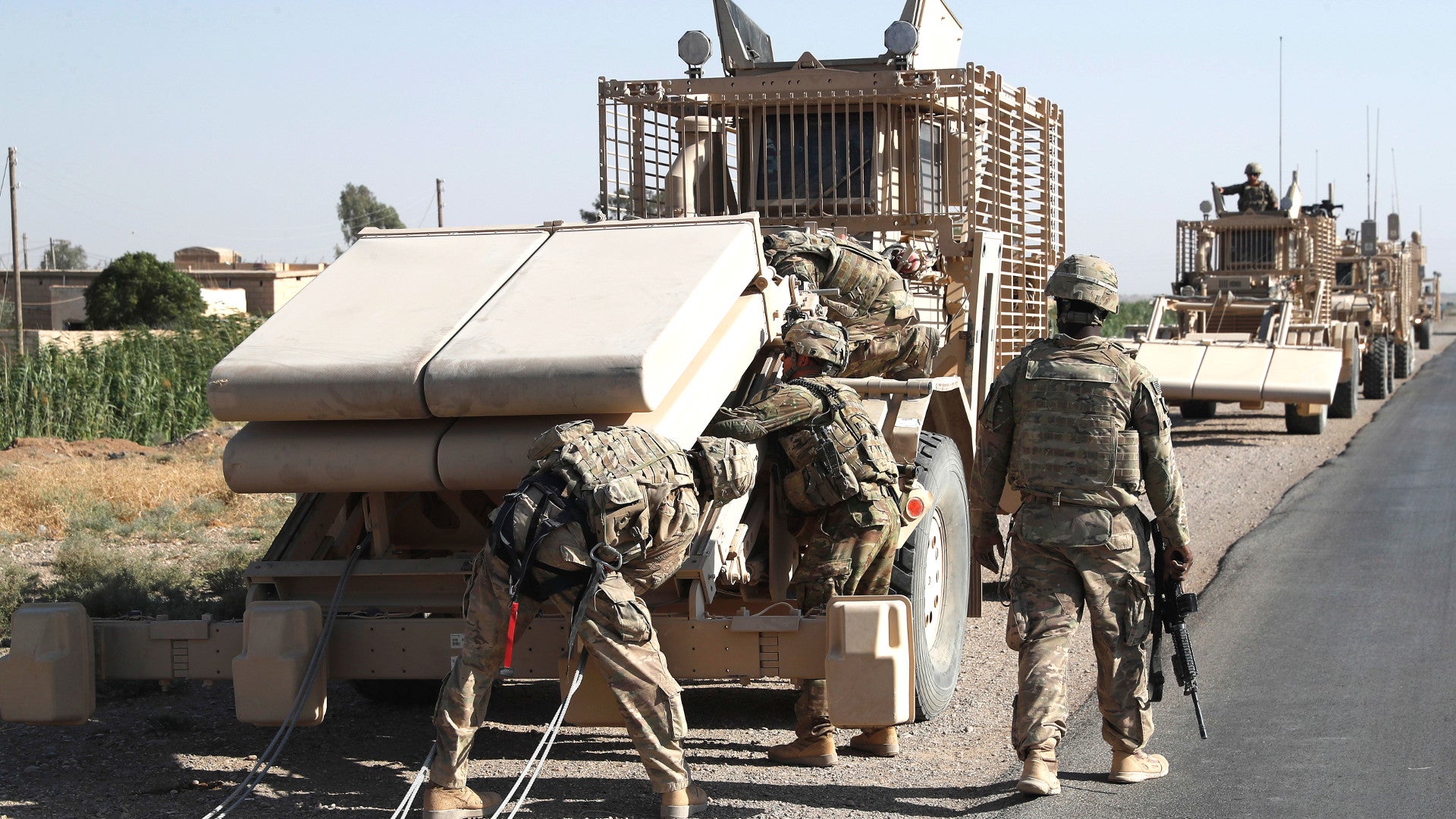Though ISIS has shown itself to be more than capable of developing new forms of improvised weaponry, including the use of small armed drones, it continues to rely heavily on old standbys such as roadside bombs, which remain a serious threat to the U.S.-led coalition and its partners in Iraq and Syria. Photos made available by The Associated Press show the situation in Syria became serious enough that the U.S. Army sent in conventional combat engineers, also known as sappers, with specialized mine clearing vehicles to help clear of hazards for American special operators and the forces they’re advising.
On July 26, 2017, photographer Hussein Malla spotted a convoy of Americans moving along a road toward Raqqa. The markings on the vehicles identified them as a route clearance team from the 3rd Engineer Battalion, an element of the 3rd Brigade Combat Team, 1st Cavalry Division. In December 2016, the Army announced the brigade was heading for a rotation in Kuwait “in support of combatant commander mission requirements,” which apparently included looking for improvised explosive devices in Syria.
The procession of American troops Malla observed included two M1270 Medium Mine Protected Vehicles, two M1231 Huskies, and an M1272 Buffalo. All three are part of what the Army calls the Mine Protection Vehicle Family and are associated with route clearing operations and it is a standard organization. The M1270s provide security and help spot objects of interest, while the M1231 and the M1272 assist in clearing any actual bombs.
In addition to the combat engineers, bomb-sniffing dog teams, explosive ordnance disposal personnel, medics, aviation support, and special operations and intelligence personnel can all aid in the operations, though none appeared to be present in the pictures. The convoy did not appear to be conducting actual clearance activities at the time and may have been on the move to support operations inside Raqqa and we don’t know how long they stayed in Syria or if they are still in the country.
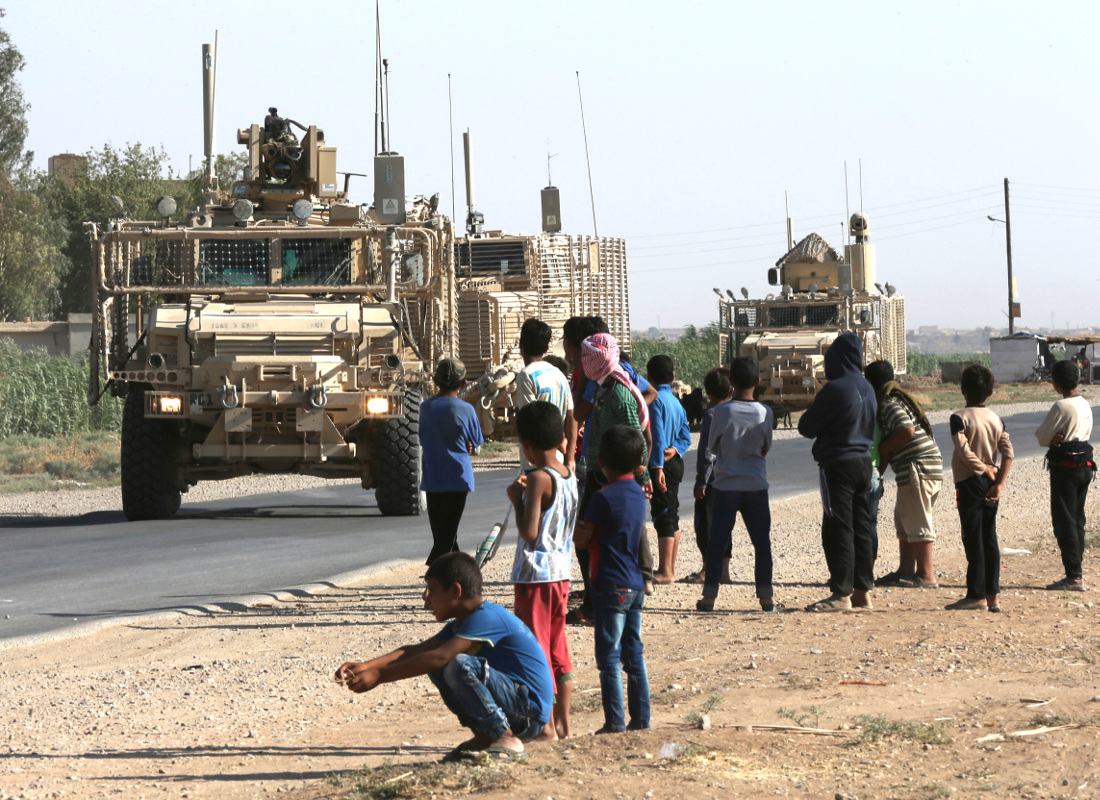
Here is a video of a route clearing operations in Afghanistan in 2014 that show these various vehicles and associated personnel at work:

As the threat to American troops from improvised explosive devices grew in Iraq and Afghanistan in the early 2000s, the Army began to expand its own dedicated route clearing elements and acquired a variety of unique and purpose-built vehicles to support the mission. These purchases included armored trucks with v-shaped hulls to deflect explosive blasts, many of which would become more commonly associated with the separate Mine Resistant Ambush Protected (MRAP) program.
The M1270 is a variant of the South African-designed RG-31 Mk 5E mine-protected vehicle, a variant of the original RG-31 with a longer chassis offering more room for passengers and cargo. One of the vehicles had a remote controlled turret on top that would allow the crew to engage enemy forces from within the safety of the truck. The other had a conventional manned turret, but carried an electro-optical sensor turret on a telescoping mast, which allows specialists to investigate potential hazards from a safe distance.
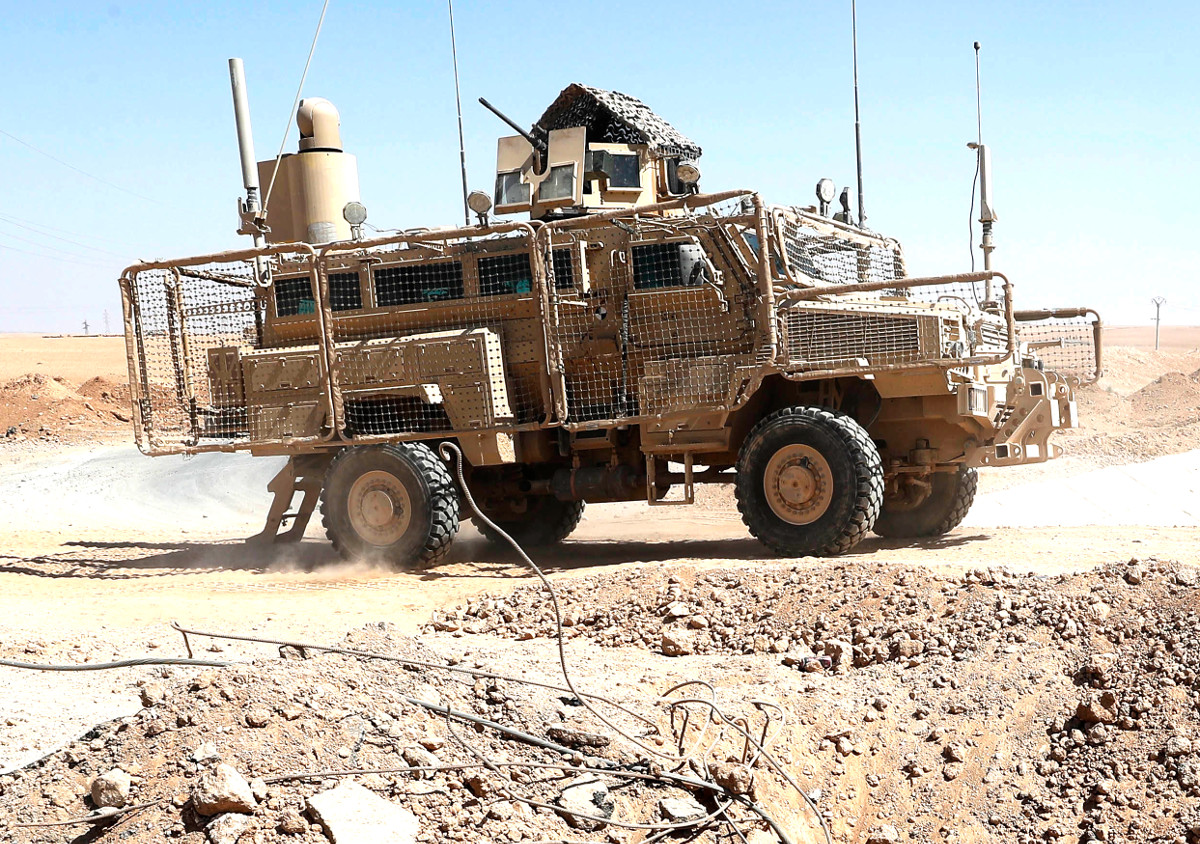
Neither of the two M1270s had an optional remotely operated arm that can help shift debris and other objects to expose potential mines and roadside bombs. They did have special “net” armor to offer additional protection against rocket propelled grenades and other light anti-armor weapons. The shaped charges in many anti-tank rounds need to detonate a certain distance from the target to be most effective. The high tensile webbing “catches” the rounds, setting them off early or preventing them from going off at all.
The M1272, another mine-resistant vehicle derived from a South African design, does have the “interrogator arm,” as well as short-range video cameras so troops can observe the work from safely inside the vehicle. The sides of the Buffalo near Raqqa were shielded behind fixed “slat” armor, which serves the same purpose as the netting on the M1270s.
The last vehicle in the convoy, the Husky, is yet another design of South African origin, and is perhaps the most unique one in the entire Mine Protection Vehicle Family. Officially described as a “tractor,” crews can fit the M1231 with a wide array of different mine-detecting sensors. It has exceptionally low ground pressure, which allows it to drive straight over mines that would detonate under the weight of many other vehicles.
The 3rd’s Husky in Syria carried what the Army calls the Husky Mounted Detection System, a powerful ground-penetrating radar that can detect buried objects. Once the system spots a potential threat, the operator can activate a separate system to mark the spot with a bright dye. Once again, slat armor protected the driver from the danger of light anti-tank rockets.
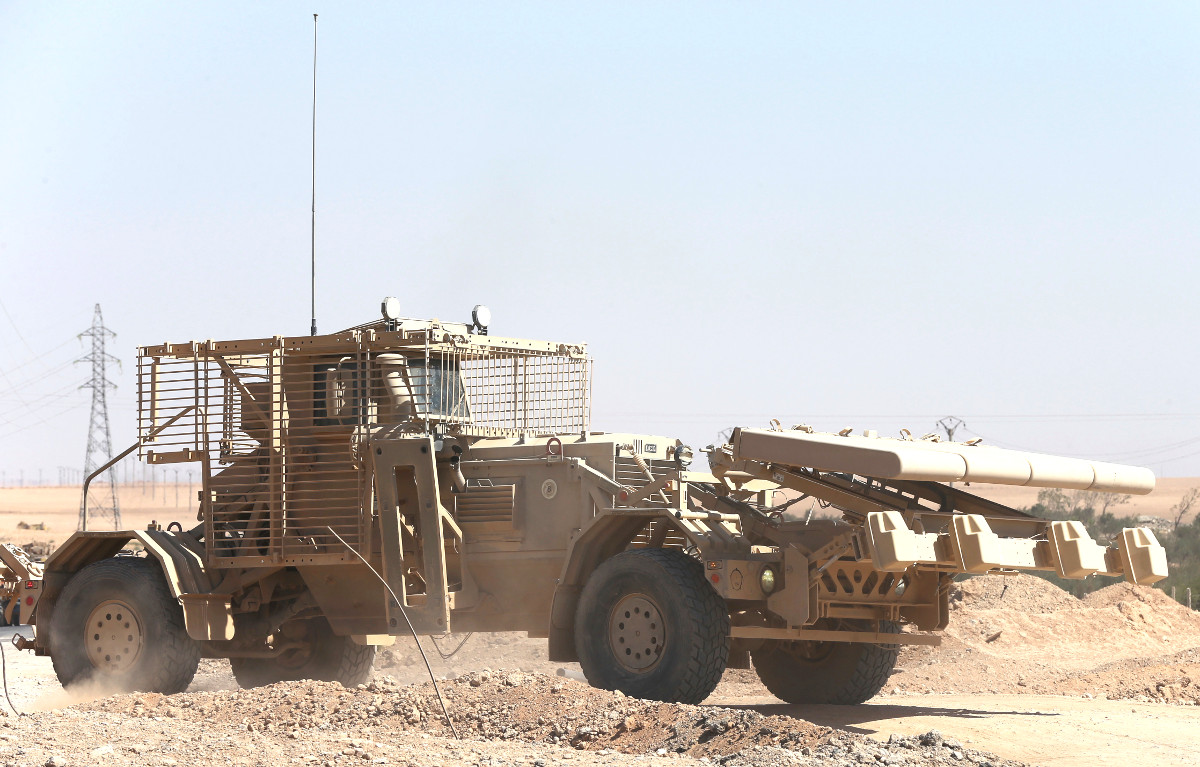
All of the vehicles in the convoy had jamming devices to prevent terrorists from remotely detonating any improvised weapons and otherwise scramble their operation. We don’t know how well these electronic defenses would be against other trigging methods, including motion-sensor activated booby traps that U.S.-support forces had encountered within Raqqa itself.
But their presence in Syria in July 2017 does underscore reports that ISIS’ defenses in and around the city had been hard for the U.S.-supported Syrian Democratic Forces (SDF) to counter on their own. At that time, these elements had already been fighting to dislodge the terrorists from their de facto capital for more than a month.
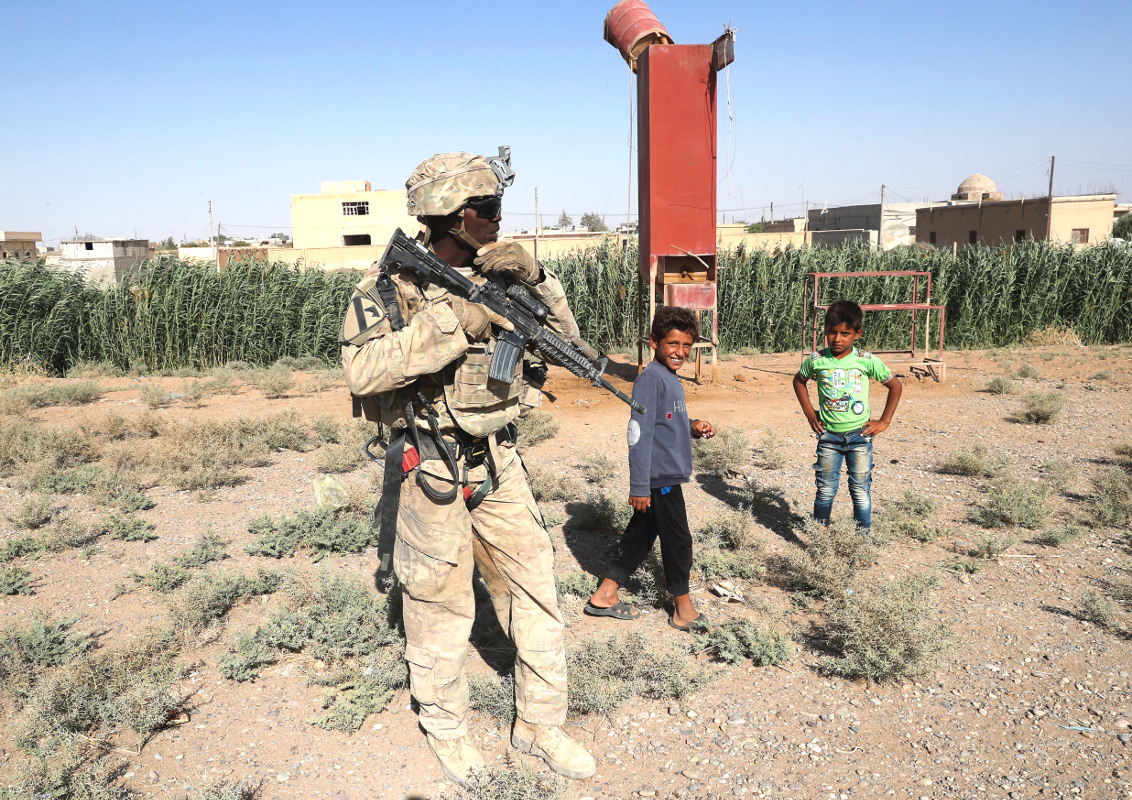
Earlier that month, witnesses near Raqqa spotted a convoy of trucks carrying mine-resistant trucks specifically associated with American special operations forces. Also present were bulldozers, which have been another key component in defeating ISIS’ improvised explosive devices, including massive suicide car bombs.
It’s also been important to keep the supply lines to and from the front lines open. Observers often spot trucks carrying armored vehicles and other equipment moving around northern Syria in support of the SDF’s operations. U.S. artillery units in particular appear to run regular logistics convoys between various temporary bases and their forward positions in order to keep up their vital fire support missions.
“I’d like to reiterate that once you reach this type of urban environment, this type of urban combat, progress becomes – it comes by building by building and block by block,” U.S. Army Colonel Ryan Dillon, the top spokesman for the U.S.-led coalition fighting ISIS, said during a briefing to reporters on Sept. 7, 2017. “And this is a very deliberate process and requires great care to also avoid collateral damage and harm to noncombatants.”
And while conventional troops have been supporting U.S. military operations in Syria for some time, the Army engineers being so close to the front lines is also notable. The U.S. military has repeatedly stressed its personnel in the country are not involved in combat, but this proximity to the front lines can only increase the risk of them becoming directly involved in the fighting, as well as becoming further embroiled in the complicated political situation, as we at The War Zone have noted many times in the past.
“We cannot determine the time period in which the battle of Raqqa will end precisely because war has its conditions,” Nowruz Ahmed, a member of the SDF’s general command overseeing the Raqqa operations, told Reuters in August 2017. “But we do not expect it to last long, and according to our plans the battle will not take longer than two months from now.”
Until then, both U.S. conventional and special operations forces will undoubtedly continue to provide a wide range of support to the SDF, including keep important routes clear of obstacles.
Contact the author: joe@thedrive.com
